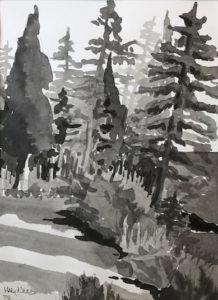
One of the best reasons for standing back from work is being able to see the whole forest for the trees, that is: the strengths of the groupings of the lights and darks in the composition as a whole. Having been bent over the details, and being the one holding the tools, it’s too easy to get compulsive about the minutia. As mini-creators, we/I think I’m in charge too easily. I need to back up, take a breath, blink several times and then look again. And time makes a difference here too, kind of like cleansing the palate, or clearing the slate from a mind-frame that just isn’t seeing it well at all.
This little sumi ink drawing was done 15 years ago. I gave it to my Mom and just got it back. It was a view out her then window. She’s gone now. This is just a material thing, but it holds memory for me from some sweet times with and for her.
I remember that when I made this, I was a little disappointed for the real view was so much better than this! I have two of these. One looked out a west window and this one looked east. This one is much stronger than the other for it’s value arrangement. But I couldn’t see that then.
I am working now on a larger drawing that will become a painting. I am mapping out the value arrangements ahead of time, aiming to keep this in mind:
- That my impetus is unique.
- That my vision however can get so easily clouded, and
- It’s only time that will show the real value
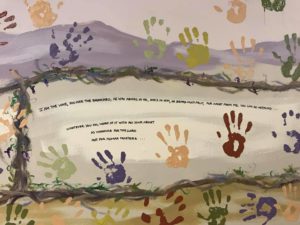
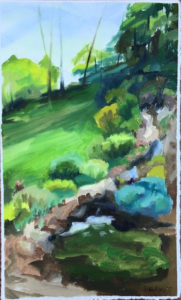 So I did a little exercise to test my “strike” resolve (see last post on the burger billboard). Abstractions made concrete, thoughts made real. The green has been shouting at me for attention, so I dug in to bring it home.
So I did a little exercise to test my “strike” resolve (see last post on the burger billboard). Abstractions made concrete, thoughts made real. The green has been shouting at me for attention, so I dug in to bring it home.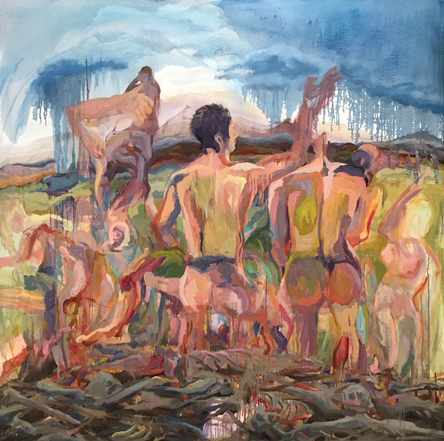

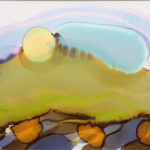 I will end the year with a simple post and a simple piece. After the workshop I taught, putting materials away, I decided to play on my own just a bit more. This one is a success and I matted it with an Emily Dickinson poem I have loved:
I will end the year with a simple post and a simple piece. After the workshop I taught, putting materials away, I decided to play on my own just a bit more. This one is a success and I matted it with an Emily Dickinson poem I have loved: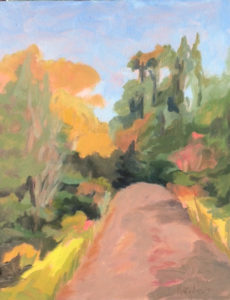 This week I went out on a trail where the leaves are turning, colors singing. The soil in this part of the state has a lot of iron in it. As a result, the dirt under my boots and all ahead of me is an unremarkable dull red-brown. The perfect foil for the brilliance decking the foliage layers on the sides of the road, I made this trail the centerpiece then. It seemed good to do. On this ground is where I stand with my easel. It’s my reference point. In the painting, I started here too, mixing the dull hues as the base line. The dirty earth is the substance out of which all this other beauty gains its nourishment, and then its contrasting show. But soon the colors above will dull too and fall back on down to the mud, enriching it with deadness and only slim memory of a day like this was. I captured a bit of it. But I often think on this idea that beauty is ultimately un-capturable in any really satisfying way. This transience, or fleeting quality seems to me to be the nature of things we call beautiful. With beauty you are ushered to a lovely impression which beckons deeply and then the knowing of it disappears as quickly as Tinkerbelle. I grasp at hues out of tubes, and mix with intention. I make stabs with the brush trying to produce a likeness. But the image is never as rich as what my retina reveled in. Beauty is a whiff of something I can’t fully own, it seems. It’s a signifier, a stand in for something grander that is calling my soul. And I keep traveling after it. I think of beauty as a moment’s glimpse of forever while my feet are still gravity bound in this mud.
This week I went out on a trail where the leaves are turning, colors singing. The soil in this part of the state has a lot of iron in it. As a result, the dirt under my boots and all ahead of me is an unremarkable dull red-brown. The perfect foil for the brilliance decking the foliage layers on the sides of the road, I made this trail the centerpiece then. It seemed good to do. On this ground is where I stand with my easel. It’s my reference point. In the painting, I started here too, mixing the dull hues as the base line. The dirty earth is the substance out of which all this other beauty gains its nourishment, and then its contrasting show. But soon the colors above will dull too and fall back on down to the mud, enriching it with deadness and only slim memory of a day like this was. I captured a bit of it. But I often think on this idea that beauty is ultimately un-capturable in any really satisfying way. This transience, or fleeting quality seems to me to be the nature of things we call beautiful. With beauty you are ushered to a lovely impression which beckons deeply and then the knowing of it disappears as quickly as Tinkerbelle. I grasp at hues out of tubes, and mix with intention. I make stabs with the brush trying to produce a likeness. But the image is never as rich as what my retina reveled in. Beauty is a whiff of something I can’t fully own, it seems. It’s a signifier, a stand in for something grander that is calling my soul. And I keep traveling after it. I think of beauty as a moment’s glimpse of forever while my feet are still gravity bound in this mud.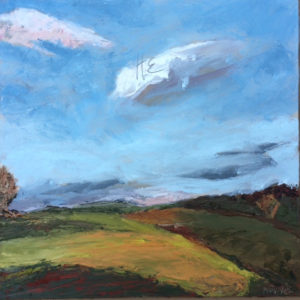 The small painting inserted here got finished today. It is one from the series I mentioned last post. Looking up is not the anesthesia of escape artists. It is rather a choice, based on sure evidence made more necessary in darkening times. It looks
The small painting inserted here got finished today. It is one from the series I mentioned last post. Looking up is not the anesthesia of escape artists. It is rather a choice, based on sure evidence made more necessary in darkening times. It looks 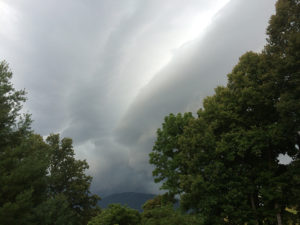 This image from my backyard in June, is taken from my iphone and completely unretouched.
This image from my backyard in June, is taken from my iphone and completely unretouched. What you see here is an under painting value plotting (using simply burnt umber and ultramarine) for a series of 5. It’s about time, and wonder and expectancy. These, once finished with top layers of color, are going to go in a prayer room. I hope to get the finished series done this coming month. I worked on a couple of them yesterday and already they are looking pretty cool.
What you see here is an under painting value plotting (using simply burnt umber and ultramarine) for a series of 5. It’s about time, and wonder and expectancy. These, once finished with top layers of color, are going to go in a prayer room. I hope to get the finished series done this coming month. I worked on a couple of them yesterday and already they are looking pretty cool. And I will use my energy instead to slice a section of a piece I painted Monday. I was at a beautiful farm owned by a woman named Ginger in a place called Goshen Valley. I was standing painting quietly next to a friend who also is suffering on the inside and doing it bravely. We took courage together and both managed to look out and to gather in some of the beauty and the glory with our brushes. That was a good day. The whole is good. But for now: just a slice, thank-you. I can be sustained with a good slice. For here’s a simple truth, easy to absorb: that which is good comes from Him (every last bit of it) and that which is not good does not.
And I will use my energy instead to slice a section of a piece I painted Monday. I was at a beautiful farm owned by a woman named Ginger in a place called Goshen Valley. I was standing painting quietly next to a friend who also is suffering on the inside and doing it bravely. We took courage together and both managed to look out and to gather in some of the beauty and the glory with our brushes. That was a good day. The whole is good. But for now: just a slice, thank-you. I can be sustained with a good slice. For here’s a simple truth, easy to absorb: that which is good comes from Him (every last bit of it) and that which is not good does not.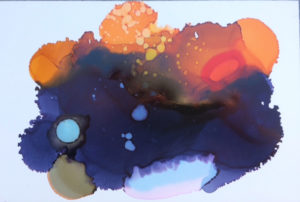 I struggle with my own voice in my work, living as I do in such a time of disintegration. I cannot make the work of my hands “say” what I hold in my heart so often. It is not my goal to be literal, but it is a desire to lift the viewer’s eyes. A friend of mine who is a photographer, grieving deeply over the death of her husband is now doing the best work of her career. We talked of this: why are we doing this work, this searching with images? Is it meaningful, is it what we “should be doing”? We got this far in our discussion: this work is an exploration into JOY. This expression is as fleeting as a sunset and as mysterious as a bird’s flight, but it is necessary, if even just for us. I have some ability to look, and to craft. Maybe through the work of my own hands others will see meaningfully also. For this, I keep on.
I struggle with my own voice in my work, living as I do in such a time of disintegration. I cannot make the work of my hands “say” what I hold in my heart so often. It is not my goal to be literal, but it is a desire to lift the viewer’s eyes. A friend of mine who is a photographer, grieving deeply over the death of her husband is now doing the best work of her career. We talked of this: why are we doing this work, this searching with images? Is it meaningful, is it what we “should be doing”? We got this far in our discussion: this work is an exploration into JOY. This expression is as fleeting as a sunset and as mysterious as a bird’s flight, but it is necessary, if even just for us. I have some ability to look, and to craft. Maybe through the work of my own hands others will see meaningfully also. For this, I keep on.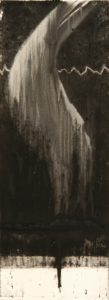 This is an older image, but a concept I’ve been revisiting in my head: the coming of whirlwind.
This is an older image, but a concept I’ve been revisiting in my head: the coming of whirlwind.